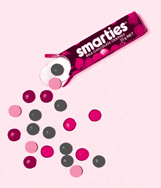|
|
:
Introduction |
|
Fourteen of the assessment tasks presented students with information to be displayed in a graph or table and instructions for preparing the graph or table. In some cases, much of the graph or table was provided, and the student was to incorporate the additional information. In other cases, a framework was provided, but students were asked to add data, title, axis labels or value labels.
 |
|
|
Five tasks were identical for year 4 and year 8 students. One of these is a trend task (fully described with data for both 1995 and 1999), two are released tasks (fully described with data for 1999 only), and two are link tasks (to be used again in 2003 so only partially described here). Five other tasks, including two trend tasks and one link task, were attempted only by year 4 students. The remaining four tasks, including one trend task and two link tasks, were attempted only by year 8 students.
These tasks were presented to students in two formats. Eight tasks were presented in station format and the remaining six tasks were presented in independent format.
The task details and results for trend tasks are presented in the first section, followed by the task details and results for released tasks. The third section contains a little task information and the results for the link tasks. Within each of the three sections, tasks used with both year 4 and year 8 students are presented first, followed by tasks used only with year 4 students and then by tasks used only with year 8 students.
Comparing
results for year 4 and year 8 students
Averaged across 33 task components used with both year 4 and year 8 students,
87 percent of year 8 students produced correct responses compared to 62 percent
of year 4 students. This indicates that, on average, students have made substantial
progress between year 4 and year 8 in the skills assessed by the tasks. More than
half of these task components were answered successfully by at least 90 percent
of year 8 students. Students at both levels were least successful in providing
titles and appropriate labels for axes and values, seeming to believe that it
was sufficient to display the data.
Trend
results: comparing 1995 and 1999 results
Three trend tasks involving a total of 11 components were administered to
year 4 students in both the 1995 and 1999 assessments. More 1999 than 1995 students
succeeded on 9 components, while more 1995 than 1999 students succeeded on 2 components.
Averaged across the 11 components, 12 percent more students succeeded in 1999
than in 1995. Most of this substantial gain was due to a large improvement on
one task, Subject Pie (p39), with 27 percent more year 4 students succeeding in
1999 than in 1995. This could suggest that a substantial change in the timing
of instruction about pie graphs has occurred between 1995 and 1999.
Two trend tasks involving nine task components were administered to year 8 students in both the 1995 and 1999 assessments. More 1999 than 1995 students succeeded on 4 components, while more 1995 than 1999 students succeeded on 3 components. Averaged across the 9 components, the success rate for year 8 students was unchanged between 1995 and 1999.